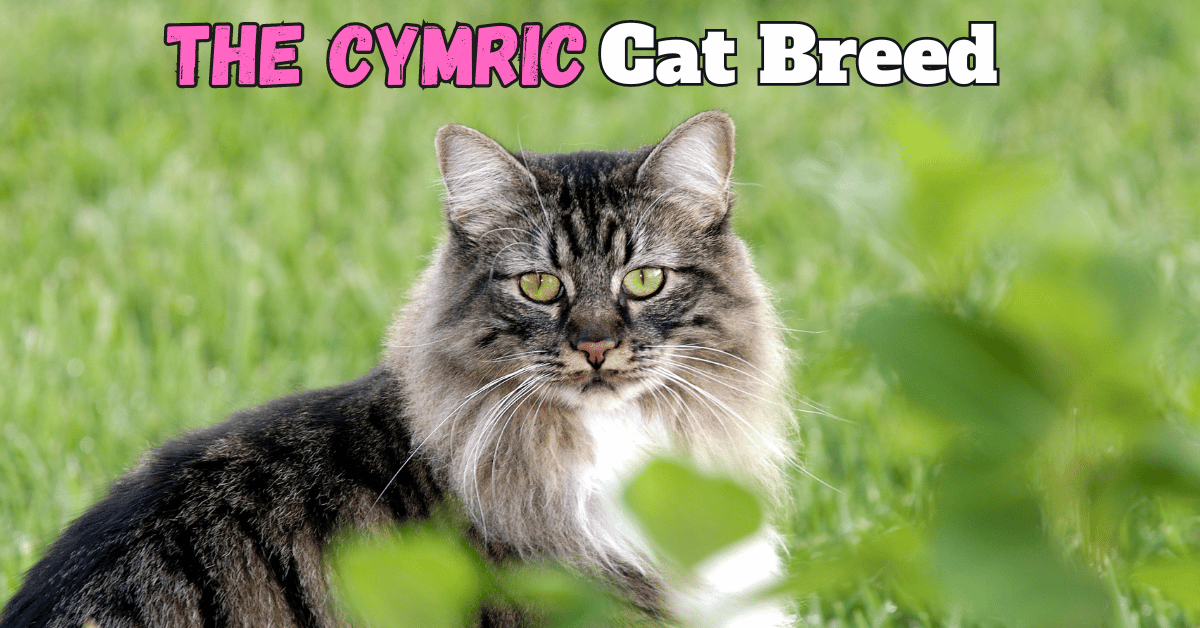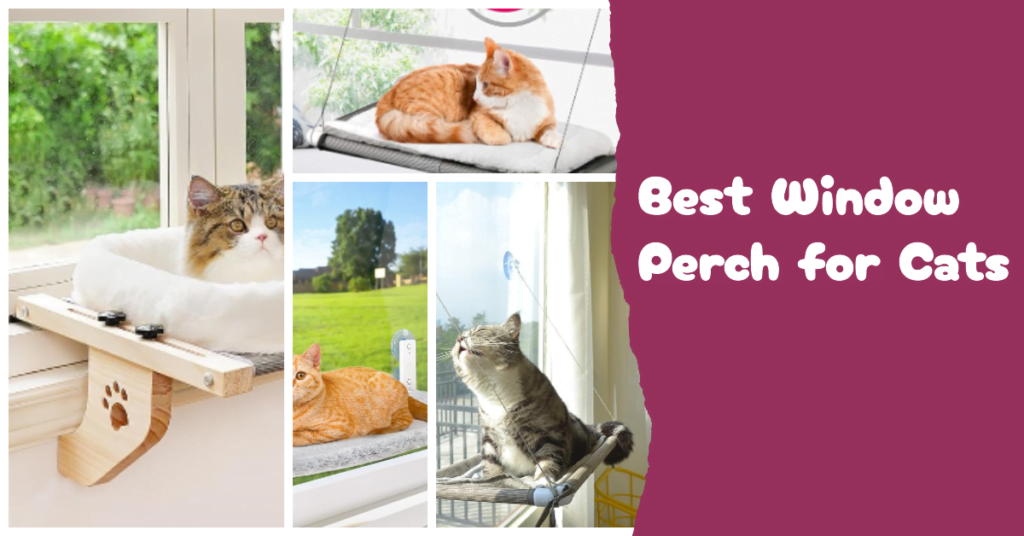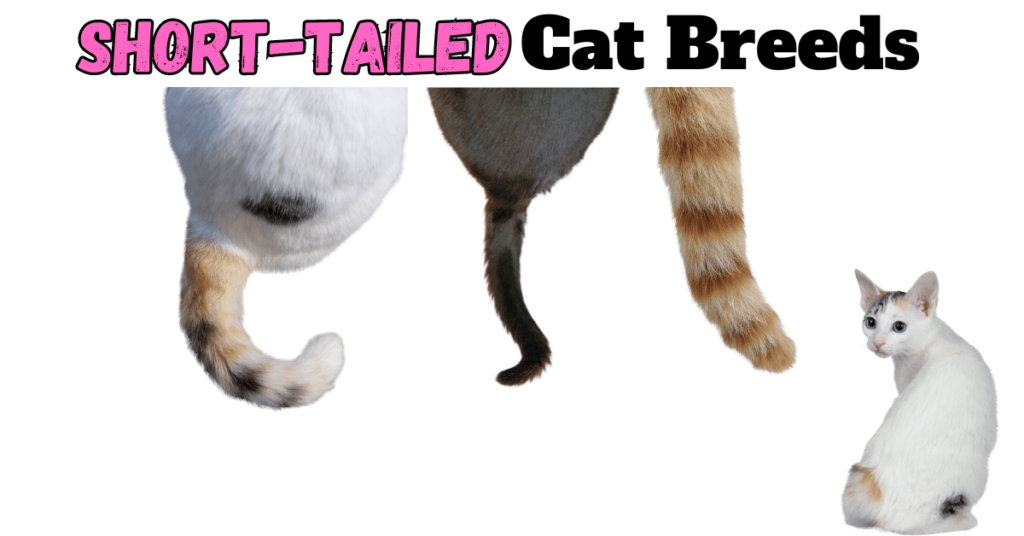This post contains affiliate links and I will be compensated if you make a purchase after clicking on my links.
Cymric Cat Breed Insights
Like its close relative, the Manx, the Cymric Cat Breed boasts rounded features and a naturally short tail, but it distinguishes itself with a luxurious long coat.
While some cat registries categorize the Cymric merely as a long-haired variant of the Manx, others recognize it as a distinct breed. Intriguingly, both long and short-haired kittens can be born in the same litter.
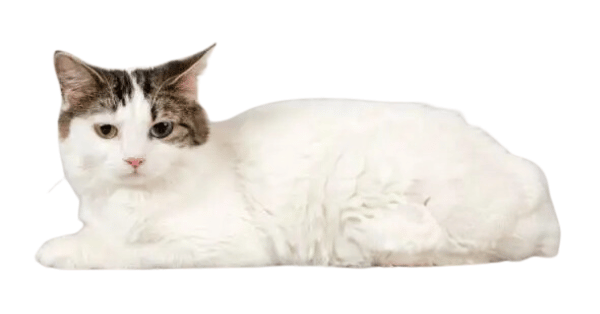
Named after “Cymru,” the Welsh word for Wales, this breed traces its Manx lineage to the Isle of Man, though the long-haired version was developed in Canada. Also known as the Longhair Manx, the Cymric represents a blend of rich heritage and unique genetics that captivates cat enthusiasts worldwide.
The Cymric Cat Breed Origins
The Cymric, along with its cousin the Manx, ranks among the oldest known cat breeds, steeped in rich legends and maritime mysteries. Historical accounts from the Isle of Man suggest that the breed’s signature taillessness originated from a mutation among the island’s domestic cats.
This closed-off environment facilitated the dominance of the tailless gene, which, coupled with the gene for long hair, passed seamlessly through generations.
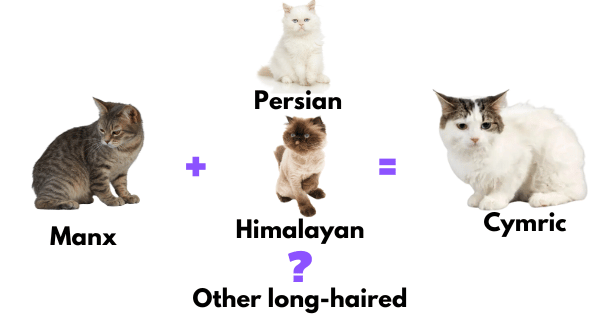
Historically, long-haired kittens born to Manx cats were overlooked as anomalies. However, this perception shifted dramatically in the 1960s in Canada, where these “mutant” kittens were intentionally bred, marking the dawn of the Cymric’s rise in the feline world.
Recognition by cat associations took time; while the Manx was established in the 1920s, the Cymric only started gaining recognition in the 1960s and rose to popularity by the mid-1970s.
While the Cat Fanciers’ Association (CFA) categorizes the Cymric as a Longhair Manx under the Manx breed standard, both The International Cat Association (TICA) and the Canadian Cat Association (CCA) acknowledge the Cymric’s unique traits by establishing distinct breed standards. These standards celebrate the Cymric’s distinctive characteristics, affirming their status in championship competitions since June 1979.
Fun Fact: The Manx is one of the oldest known cat breeds. Many wonderful legends surround the origin of this breed. The first felines arrived on the island via ship, but no one knows where they originated.
Cymric Cat Breed: Physical Characteristics
Growth and Structure
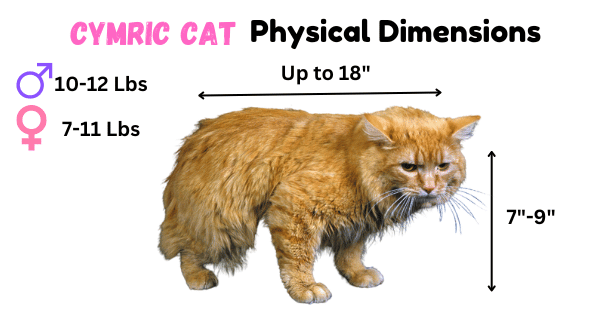
The Cymric is a medium to large breed that matures slowly, reaching full maturity at around two years. Despite its sturdy bone structure and a body length that can reach up to 18 inches, the absence of a tail can make the Cymric appear smaller than it actually is. The breed feels surprisingly heavy when picked up, thanks to its well-muscled build.
Males can weigh up to 12 pounds, while females typically range between 8 and 12 pounds. The breed features a rounded appearance with notably shorter front legs compared to its hind legs.
Coat Details
The Cymric boasts a luxurious, long, dense, and resilient double coat that adds to its regal appearance. This includes a soft undercoat known as the ‘awn,’ with the coat being particularly long and voluminous around the ruff, creating a distinctive shirtfront appearance.
The coat comes in any color except chocolate or lavender, and any pattern except Himalayan or patterns mixed with white.
Eye Color Variability
Their eyes are a captivating feature, coming in a variety of shades including amber, green, hazel, copper, gold, yellow, and orange, which adds to their expressive charm.
Tail Classification
Similar to their parent breed, the Manx, Cymric kittens can have varying tail lengths, which are classified as follows:
- Rumpy: No tail whatsoever, with no extension of the tailbone.
- Rumpy Riser: Up to three vertebrae, slightly noticeable and may rise when the cat is excited or alert.
- Stumpy: A small stump consisting of up to five vertebrae, more noticeable than a riser but still short.
- Longies: A tail longer than five vertebrae but shorter than a full-length cat tail.
Rumpies are particularly prized in cat shows and are often the only type eligible for showing in some organizations due to their distinctiveness.
Fun Fact: The Isle of Man Longhair is a fully tailed version of the Cymric cat, sharing all its features except the taillessness. It’s recognized as a separate breed by the New Zealand Cat Fancy (NZCF) and comes in coat colors similar to the British Shorthair.
The Personality and Temperament of the Cymric Cat
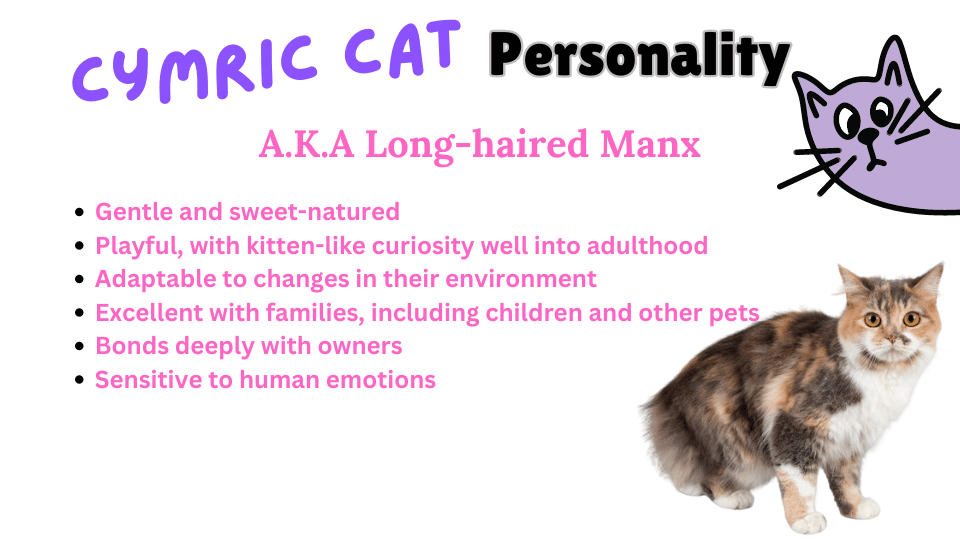
The Cymric cat is known for its placid and sweet demeanor, rarely perturbed by changes in its environment. This breed matures slowly, maintaining a playful, kitten-like personality well into adulthood. Despite their medium size, Cymrics continue to display youthful curiosity and enthusiasm throughout their lives.
Their gentle nature makes them excellent family pets, fitting well in homes with children and other animals. They adapt easily to their surroundings, bonding deeply with their owners and showing a remarkable sensitivity to human emotions.
Caring for the Cymric Cat Breed: Health, Diet, and Exercise
Health Issues
Cymric cats share health concerns with their Manx relatives due to the gene responsible for their taillessness, which is linked to spinal defects such as spina bifida.
These issues can lead to neurological problems, including difficulty with movement or elimination, often detectable before the kitten reaches six months of age. In severe cases, it may be necessary to consider humane euthanasia. Choosing responsible breeders who provide a guarantee of spinal health can help mitigate these risks.
Fact: The average lifespan of a Cymric cat is between 9 and 13 years, but with proper care, they can enjoy a full and comfortable life.
Diet and Nutrition
To keep a Cymric cat in good health, it’s crucial to manage their diet carefully. These cats have a robust appetite and can quickly become overweight if their eating habits are not monitored.
It’s recommended to feed them measured amounts of cat food at regular meal times, ideally two to three times a day. Avoid leaving food out all day to prevent continuous snacking, which can contribute to weight issues.
Exercise
Despite their calm demeanor, Cymric cats are surprisingly active and enjoy a good play session. Their unique, rolling gait is as amusing as it is distinctive. To support their health and prevent boredom, regular exercise is essential.
These cats are also skilled jumpers and thrive in environments that offer plenty of high perches for climbing and jumping. Providing such spaces helps them expend energy and maintain their muscular build, keeping them both physically and mentally fit.
Grooming Requirements for the Cymric Cat Breed
Proper grooming is crucial to maintain the health and appearance of a Cymric cat. Here’s a breakdown of their grooming needs:
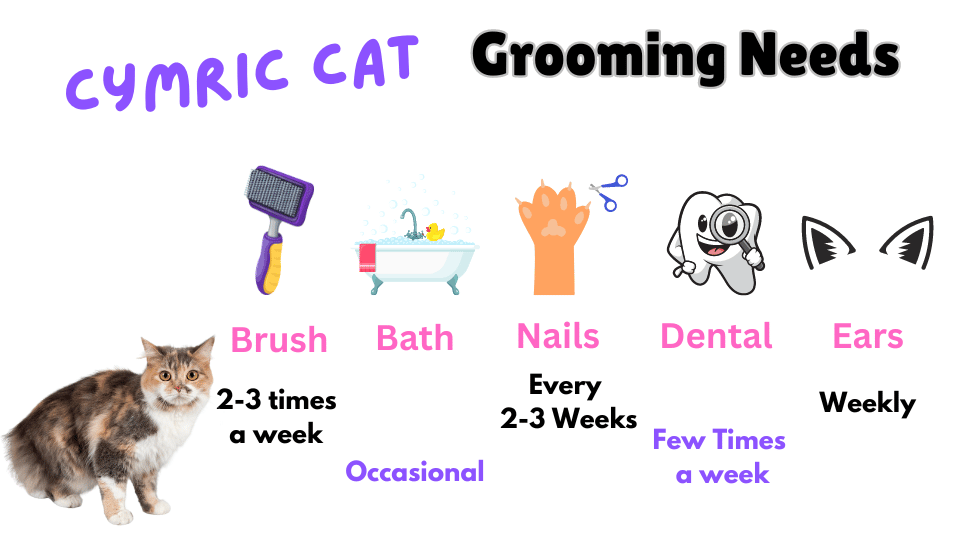
- Brushing: The Cymric’s dense double coat sheds moderately. Brush daily during shedding season and 2-3 times a week otherwise to prevent mats and maintain smoothness.
- Bathing: Occasionally, as needed when the coat feels greasy or starts to clump, using cat-friendly shampoo.
- Nail Care: Trim nails every two to three weeks to prevent overgrowth and discomfort.
- Ear Cleaning: Perform regular weekly checks and clean as needed using a vet-approved solution if dirt or debris is present.
- Dental Care: Brush teeth several times a week to prevent tartar buildup and periodontal disease.
Final Thoughts on the Cymric Cat Breed
The Cymric Cat Breed is a true blend of history, charm, and beauty. With their unique tailless silhouette, plush coat, and endearing personality, they stand out as one of the most intriguing feline companions. Whether they’re gracefully leaping to high perches or curling up for a cozy cuddle, Cymrics bring a touch of elegance and warmth to any home.
Meet Sean, a fintech whiz with a penchant for pet purrs and blockchain buzz. After a decade of fintech feats, Sean’s tech talents leaped from ledger lines to litter lines, driven by a passion for pets and a vision for a more connected pet care community. With three critter companions as co-pilots, Sean launched this blog to share a treasury of pet-friendly tech tips and tales.

